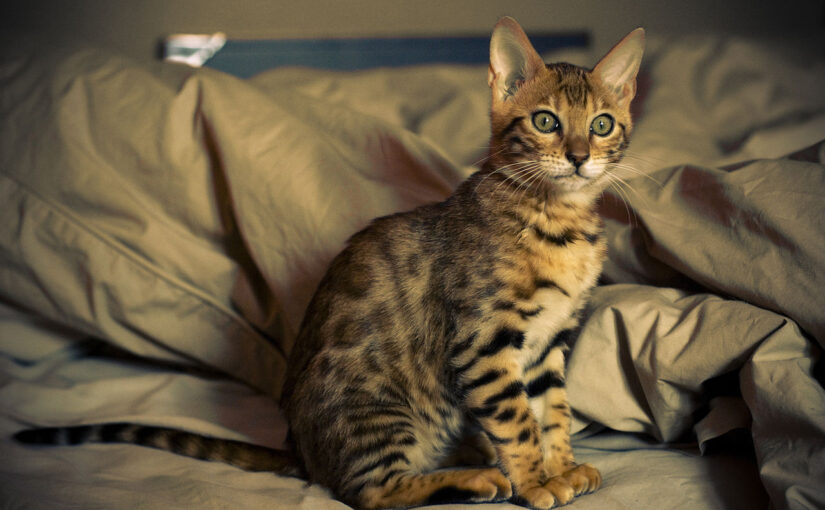The sleek coat catches the light with a shimmer that seems almost unreal, rosettes and spots scattered across a muscular frame like a miniature leopard prowling through your living room. This is the Bengal cat, a breed that captivates hearts with its exotic appearance and surprises admirers with an affectionate, playful personality that defies its wild looks. For cat lovers who crave both beauty and companionship, the Bengal offers something extraordinary, a living work of art that purrs, plays, and forms deep bonds with the people who welcome it home.
A Breed Born From Vision
The Bengal’s story reads like an ambitious experiment in bridging two worlds. Jean Sudgen Mill, credited as the true originator of the breed, saw potential in crossing Asian Leopard Cats with domestic breeds during the 1980s. Her vision extended beyond creating a stunning pet; she hoped to reduce demand for real wild cat furs and offer an alternative to people keeping illegal exotic animals. Mill received hybrid cats from Dr. Centerwall’s research program and began her meticulous work, introducing bloodlines from Abyssinians, Bombays, British Shorthairs, and Ocicats to create the Bengal we know today. The famous “Millwood Tory of Delhi,” a domestic street cat from India, appears in virtually all Bengal pedigrees, cementing the breed’s diverse genetic foundation. Through tireless dedication, Mill transformed these wild hybrids into sweet-natured companions who carry the jungle’s beauty in their genes but possess the temperament of a devoted house cat.
Personality That Defies Expectations
Despite their untamed appearance, Bengals are remarkably affectionate and form loyal attachments to their families. They seek attention constantly, following their humans from room to room with an almost dog-like devotion. One Bengal owner describes having a cat that “LOVES to be held and insists on being on me almost constantly,” showcasing the intense bonding these cats form. Yet this affection comes packaged with boundless energy and intelligence that demands engagement. Bengals view the world through a hunter’s eyes, assessing every object as a potential toy or climbing challenge. Their vocalizations range from soft cooing and chirping to gravelly sounds that can become quite strident when they encounter unfamiliar situations. They’re not lap cats in the traditional sense, though they’ll happily cuddle on their own terms after burning through their considerable energy reserves.
Energy Levels and Exercise Needs
Potential Bengal owners must understand that this breed requires commitment to daily play and mental stimulation. Experts recommend at least 30 minutes to an hour of active playtime each day, incorporating activities that tap into their natural hunting instincts. These cats excel at interactive games, chase toys, climbing towers, and can even be trained to walk on a harness outdoors. Some Bengal enthusiasts invest in cat running wheels, wall-mounted shelving systems for climbing, and catio spaces that allow safe outdoor exploration. Without adequate exercise, Bengals may develop destructive behaviors like inappropriate scratching, excessive climbing on curtains, pacing, or persistent vocalization. Learning tricks becomes a favorite pastime for many Bengals, making them ideal candidates for clicker training and puzzle feeders that challenge their sharp minds.
Health Considerations
Bengals generally enjoy robust health, with lifespans ranging from 12 to 18 years when properly cared for. However, responsible potential owners should be aware of certain health issues that can affect the breed. Progressive retinal atrophy, patellar luxation, hip dysplasia, pyruvate kinase deficiency, hypertrophic cardiomyopathy, and anesthetic allergies (particularly to Ketamine) appear more frequently in Bengals than some other breeds. Reputable breeders screen their breeding cats yearly for hypertrophic cardiomyopathy through echocardiograms performed by veterinary cardiologists, and prospective buyers should verify these health clearances before committing to a kitten. Regular veterinary care, including annual or bi-annual wellness exams, vaccinations, dental care, and heartworm preventives, helps Bengals maintain optimal health throughout their lives.
Grooming and Daily Care
The Bengal’s short, dense coat requires minimal grooming compared to long-haired breeds, making maintenance refreshingly simple. Weekly brushing sessions suffice to remove dirt and distribute natural skin oils, though some cats may benefit from slightly more frequent grooming during seasonal shedding periods. Their athletic build and active nature mean Bengals typically maintain healthy weights naturally, provided they receive adequate exercise and appropriate nutrition. Dental care deserves attention, with veterinarians recommending regular tooth brushing several times weekly, along with annual dental exams and professional cleanings.
Is a Bengal Right for You?
First-time cat owners should approach Bengal adoption with realistic expectations. These demanding, intelligent, tenacious cats require patience and dedication. They thrive in households that can provide companionship during the day, as boredom leads to mischief in a breed this clever. Families with time and energy for daily interactive play will find Bengals rewarding companions. The breed suits people who appreciate their territorial nature and can provide enough resources, space, and enrichment to prevent conflicts with other pets. Adopting a Bengal means welcoming a conversation partner who chirps and coos, an athlete who leaps to impossible heights, and a shadow who follows you everywhere with devoted eyes. New Bengal parents should prepare a quiet acclimation room with a tall cat tree, comfortable bed, water fountain, and window perch for the first few weeks, allowing the cat to adjust gradually to new surroundings on its own terms.
The Bengal cat offers something rare in the feline world: the appearance of wild majesty combined with a sweet, loving temperament that bonds deeply with family members. For those willing to meet their considerable exercise and mental stimulation needs, Bengals become extraordinary companions whose beauty and personality create daily moments of joy and wonder.
Image: Baby Atticus.
If you find joy in these tales of twitching whiskers and gleaming eyes, consider helping keep Whiskerito.com alive and purring. Your donation supports thoughtful research, engaging content, and the warm, wonder-filled community that makes this space what it is.
